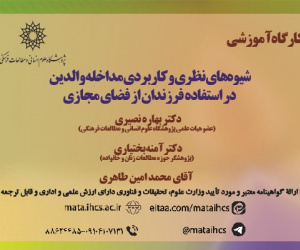جایگاه اموال دولتی در نظام حقوق ایران (مقاله علمی وزارت علوم)
درجه علمی: نشریه علمی (وزارت علوم)
آرشیو
چکیده
در نتیجه گسترش نقش دولت ها در مسئولیت پذیری که نتیجه ایدئولوژی سیاسی و افکار اقتصادی حاکم بر جامعه، منجر به افزایش نقش دولت ها در عصر جدید با رویکرد دولت رفاه اجتماعی شد. در نتیجه، دولت برای ارائه خدمات عمومی و انجام وظایف قانونی خود دو گونه اموال در اختیار دارد: اموال عمومی و دولتی. در نظام حقوقی جمهوری اسلامی ایران، اموال دولتی تعریف نشده، در مقابل در قانون محاسبات عمومی کشور مصوب 1366، مواد 106 به بعد حاوی نکته ها و معیارهایی است که در جهت احراز مؤلفه هایی برای تعیین اموال دولتی از سایر اموال مفید می نماید؛ اما در ماده 2 آیین نامه اموال دولتی مصوب 1372 اموالی که صد در صد آن توسط دولت خریداری شده یا به تملک آن درآمده یا درمی آیند، اموال دولتی می داند؛ بنابراین، این سؤالات پیش می آید که آیا می توان تمایزی بین اموال دولتی به معنای عام و خاص قائل شویم؟ با حذف عبارت شرکت های دولتی در ماده 2 آیین نامه اموال دولتی مصوب 1374 باید قائل به تمایز اموال شرکت های دولتی از سایر اموال دولت بود؟ آیا اموال دولتی قابلیت تملک دارند؟ معیارهای تفکیک اموال دولتی از سایر اموال کدام اند؟ در این مقاله تلاش شده با توجه به عدم تفکیک بین اموال دولتی و سایر اموال، ملاکی برای تشخیص، تعیین و ضابطه ای برای شناسایی این اموال به صورت عملی مورد شناسایی قرار گیرد؛ بنابراین، هدف از این تحقیق بررسی و شناسایی اموال دولتی است و در راستای آن، پیشنهادهایی در مورد نحوه تفکیک این اموال از سایر اموال داده می شود.The status of state property in the legal system of Iran
As a result of the expansion of the role of states in accountability, which is the result of the political ideology and economic thoughts governing society, the role of states in the new era has increased with an approach "state- social welfare". Therefore, the state has two types of property to provide public services and to do its legal duties: public and state property. In the legal system of the Islamic Republic of Iran, state property is not defined; in return, in the 1987 Act on the State Public Auditing, the article 106 and the subsequent articles contain the considerations and criteria which are useful in determining the components for distinguishing state property from other property, but, in Article 2 of the State Property Regulations of 1993, property purchased or acquired 100% by the state, are called state property; So, these questions arise as to whether we can distinguish between state property in general and in specific sense? With the deletion of the word "public corporations" (State-owned companies) in article 2 of the State Property Regulations of 1995, should one distinguish the property of state-owned enterprises from other state property? Are State Property acquirables? What are the criteria for distinguishing state property from other property? This paper has tried to provide a practical criteria for identifying and determining these properties in practice, given the lack of separation between state property and other property; Therefore, this research aim to investigate and identify the state property, and give suggestions in this regard as to how this property is distinguished from other property.
State property, Act on the State Public Auditing, State property regulations, State, State-owned companies











